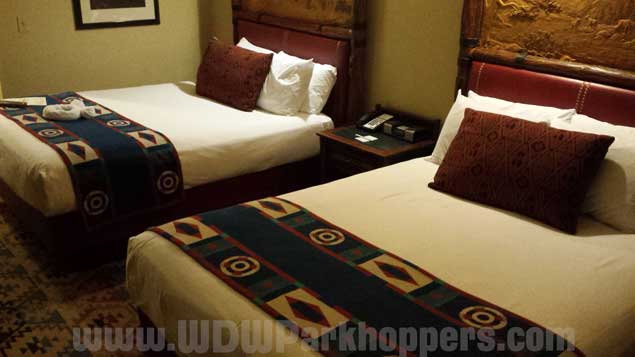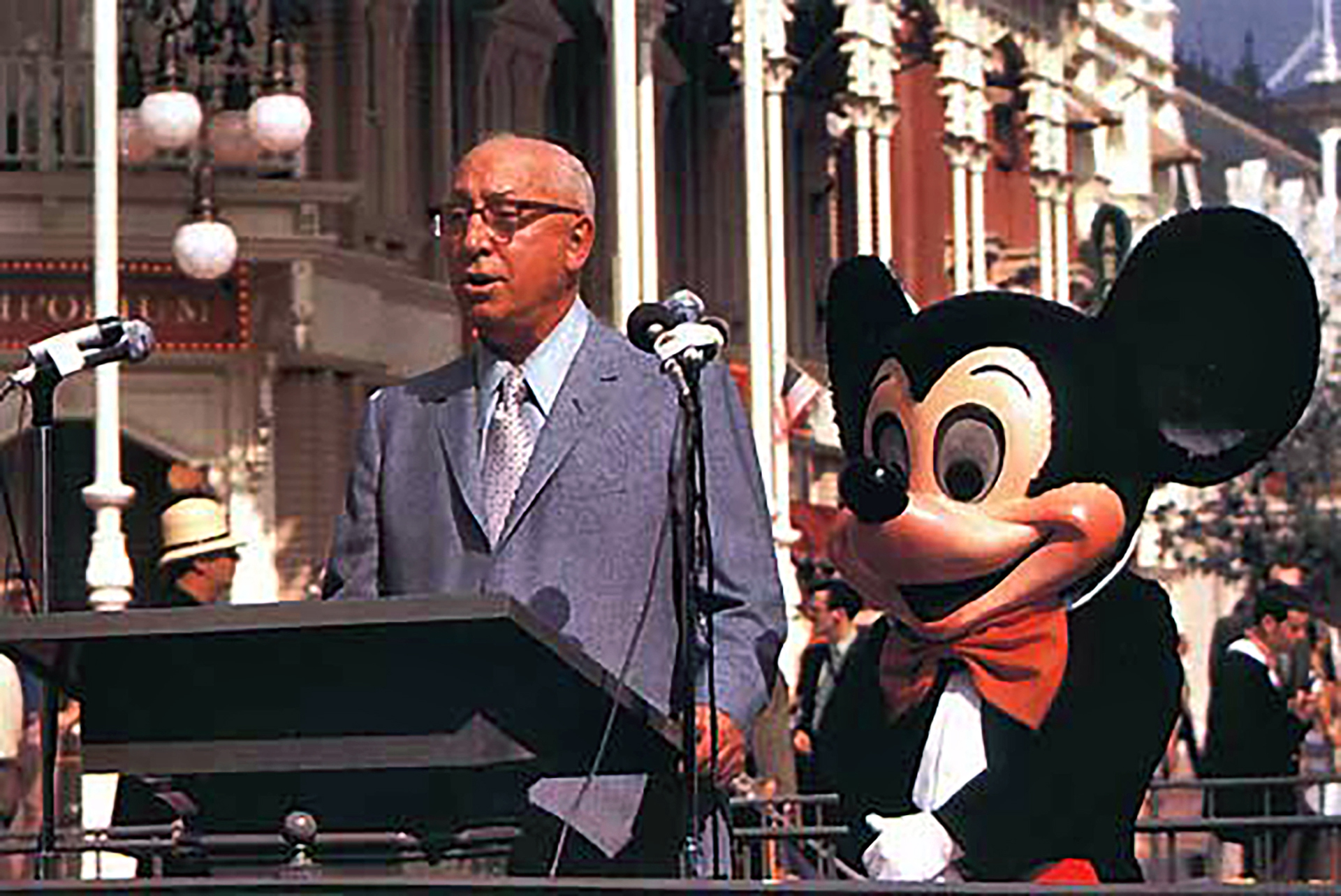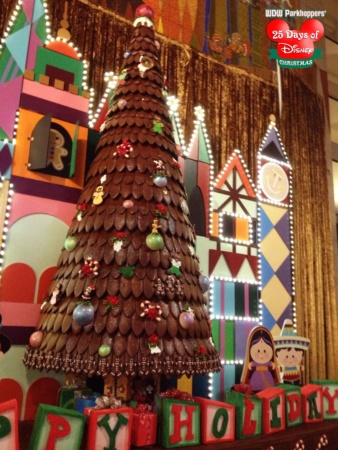The History of Disney’s Fast Pass-Should it remain free?…
It’s been quite a long spell since my last article, the Holiday season of Halloween, Thanksgiving and Christmas has taken their toll of my time, and the Honey-Do list is larger than the national debt, but its good to be back at my desk. However, this is the first time in my over 17 years of covering Disney that I totally disagree with my beloved Walt Disney Company. Over the years, I was not happy with some decisions, i.e. the loss of Mr. Toad’s Wild Ride, Magic Kingdom’s Skyway, and I did enjoy Body wars in EPCOT, but I knew Disney needed to keep things fresh and new for the guests, Walt always wanted to forge ahead with new technology and ideas.
I also am cognizant that Disney is a business, and needs to cultivate new sources of revenue in order to maintain its high standards. Since this pandemic, Disney and thousands of concerns lost money. However, the fact, I am so disappointed is that Disney has decided to eliminate its free fast pass system for a paid service. There is no option, either you pay a fee for the system, or languish in the stand-by lines. With todays inflation, people out of work, and many struggling to get by, this added expense will be a hard burden on many guests. In my humble opinion, Disney could have made this an optional “Lighting Lane”, like single rider only, for many would pay. It would have been a wonderful balance, to at least still avoid the lines, but pay it you want for the special faster service. With that said, here is a complete history of the Fast Pass system, how it came about and the stages it has gone through…
When Disneyland opened on July 17th, 1955 Walt and company never realized that it would create a logistic problem concerning people waiting in line to see an attraction. The astronomical popularity of Disneyworld grew yearly, and with that, longer and longer lines to see the attractions and shows. This trend continued with the opening of Walt Disney World in Florida and parks worldwide. I don’t believe that Disney would foresee of just how mathematically convoluted and complicated it would be just to shorten the waiting lines would become. By the late 1990’s the complaints reached fever pitch among guests, and 1998 saw a park attendance drop around 10% in the parks.
Disney exec’s took notice and Greg Hale, then head of controls and engineering and holder of many U.S. patents, one of them for assisting in developing Disney’s first Fast Pass service. In 1999 he established a system to have guests wait in a virtual standby line, with a set time to return, so they could enjoy more of the parks. However, there is a bit more to the story. Disney also realized that with so many guests standing in lines, they were not eating in restaurants or buying in the gift shops. Money played a big part in this also. Disney is a business after all. This system we fondly remember was simple…Go to your attraction, approach the fast pass machines, scan you ticket or annual pass and receive a ticket with a time to return and enjoy without the wait. One problem was you could not get another fast pass until your first one was complete, so if you had a fast pass that was 3hrs away, you had to wait that long for another. A solution was to allow you to obtain another fast pass 2 hours after the first.
By February 17th, 2003 fast pass issued 100 million tickets, and Walt Disney World had 26 fast pass attractions. In the mid 2000’s Disney used fast pass as an incentive for vacation packages. This “Enhanced fast pass” removed the 2-hour window, which allowed guests to garner as many fast passes as achievable, the only caveat was no fast passes for the same attraction until that one expired. Guests could start Disneyland in the morning, get a fast pass for every attraction, enter California Adventure, obtain a fast pass for every attraction in that park, with 16 fast passes, that was nirvana. Big problem was lines were longer, the fast pass lines were jammed with guests waiting on their times and standby lines grew larger.
In 2002, Jay Rasulo replaced Paul Pressler as president of Disney’ theme park division. His solution was to remove fast pass from selected attractions. At Disneyland, Winnie the Pooh, Pirates of the Caribbean and Star Tours, fast pass was removed. The Haunted Mansion retained fast pass, but only for the Haunted holiday. California Adventure’s Muppet Vision and It’s Tough to be a Bug lost its fast passes. In Walt Disney World, the Haunted Mansion fast pass was removed.
It was in September 2007; Bob Iger was Disney’s CEO and fast pass was 8 years old. Iger announced that Disney developed a technology and computer system that would let guests obtain fast passes through mobile devices. A thorough study was made to see if the technology would enhance guest experiences. Top priority, wait times and Crowd control. It was Vice President of business development, John Pachet, while reading a Sky Mall airplane magazine about a magnetic wrist band that would alleviate joint function, thought if guests had a wristband with technology inside for Disney parks, i.e. a “Magic Wristband” The called it the “Experience Band” or “Xband” for short.
Employing a test area in Body Wars in EPCOT, the test bands complete with an RFID inside would network with points in the parks, hotel keys, park tickets even your credit card. 2008, Disney began development on the “Nexgen Experience”, allowing guests to order food, enter queue lines and book entertainment. Disney partnered with Verizon and designed a mobile app called “Mobile Magic”. Guests could access a map of the park, view wait times, fast pass times and showtimes, and play trivia. You had to text message to download the app and it cost $9.99 for 180 days.
In 2009, Tom Staggs replaced Rasulo as head of Disney parks. He inherited Nextgen and the My magic plus website. Fast pass was overhauled, now called “Xpass” which was to “Guarantee experiences”, guest satisfaction, i.e. eating at favorite eateries, rides and retention at resorts. You could book multiple fast passes before arriving, and use the Xband instead of paper tickets. Given priority to resort guests, they could reserve 2 to 4 fast passes before arriving. The problem was not enough fast passes at the attractions, many running out before noon. Disney realized that in order to allow multiple fast passes for all, they tried using fast pass for all attractions, even for fireworks, parades, meet and greets and events without lines. This inflated the number of fast passes that could be offered. But the basic technology was in place and Nexgen and the My Magic+ continued to develop.
Disney’s board of directors, with the grant of 1 billion dollars approved My Magic+, and its rumored that Iger voiced to Staggs, “This better work”. With the wristbands renamed “Magicbands” and Xpass to Fastpass+ in 2013 Disney announced the new system. With the upgrades, guests could grab 3 fast passes in advance, for all 4 parks. Resort guests could access Fastpass 60 days in advance, all others 30 days. This was introduced in stages in 2013 and 2014. But as with all new tech, there were considerable glitches and issues with the system. The Wi-Fi was sporadic at best, the bands frequently malfunctioned, the app was unstable and constant website crashes caused the rollout team’s desire to end the program, the technology was ruining the whole platform. But Disney executives retorted…” No, we are in too deep”
The team was disappointed, the technology was spotty, but it did work, however guest experience never reached the next level. Most cast members despised it, the promise of new automated jobs faded, and many positions became frustration to work at. Plus, the support department for the system tripled in size. The web site and bands made no difference in guests’ perception, some hated it, some liked it. In effect it was a billion-dollar white elephant.
With the paper fast pass retired in 2014, Fastpass+ presented a hard learning curve for many guests. The system was accessed wholly by the Fastpass kiosk, app or website. As a result, lines were forming at the kiosks, to get a pass to skip the lines. The system was undergoing constant tweaking. In 2013 Hollywood Studios and EPCOT utilized a tiered Fastpass+ system where the most popular attractions were set apart from the rest and just one attraction could be had at one time. In February 2014, Fastpass+ was complete and all of the paper kiosks were removed from the parks. Several months later Fastpass+ allowed unlimited Fast passes after the first 3 were completed.
The next major change happened in 2016, when the itinerary system was abandoned and guests could choose their own Fast pass time, eliminating the 3 Fast pass requirements; guests could choose one or two Fast passes, without starting with three. Plus, guests could now choose additional Fast passes on the app without the kiosks. In 2017, Disneyland updated their Fast pass program. They were to invoke the new system from Walt Disney World, but decided to develop a different system called “Maxpass”. For the price of $10.00 a day, Fast passes could be had one your phone, but you had to be in the park, and only one at a time. You had to wait until the window came up or 90 minutes after the first one was booked. Guests liked this system better than Fast pass+.
With all this said, despite this being a contentious system, it does have its pro’s and con’s…Pro 1-Can skip the line more Pro 2-Better traffic flow Pro 3-Less guests in the parks, less people rushing in to get Fast passes, they already have three. Pro 4- Planning. Con 1-Irrelevent Fast passes, many venues using Fast pass had large waiting queues, did not require Fast pass. Con 2-Longer Fast pass lines. With the paper Fast pass system, cast members knew instantaneously an attraction problem, but booking 60 days out, who would know the future, or the attraction could have a full days’ worth of Fast passes given out, creating tremendous backup line. Con 3- Ratio of Fast pass to standby lines.
Fast passes were given priority to Standby lines, but how much? Too many variables and never a direct answer. Cast members at the split points had a hard time dealing with keeping the ratio of 80/20, every 4 Fast passes to one Standby. When backup occurred, cast members had to modify the ratio constantly, a very difficult task. Ratios of 4/1, 20/1 and 100 to one could be encountered. Con 4- Availability. Many Fast passes were gone before the day even started. Con 5- Planning. The system increased the amount of planning and research. It forced planning in advance or risk riding attractions without long wait times. This caused many Fast passes for popular attractions gone even before the 60-day limit. Many guests longed for the old days of more flexibility.
Con 6- Standby. Largest complaint was Fast pass+ made the wait times longer than ever. Haunted Mansion and Pirates, did not offer Fast pass, but had higher wait times, Everest and Space mountain which utilized Fast pass had a minor decrease in wait times, and as time went, most of the wait times became longer than before. Since no statistics were taken by Disney before or after Fast pass, this question will never bed answered.
The latest improvement and phase of the Fastpass system, and most condemned by Disney fans and guests came about in 2019 at the DC expo in Anaheim when CEO Bob Chapek announced that Fastpass+ and Maxpass systems would be discontinued and replaced with a new free “Genie App” and a paid addon companion to the app, “Genie+” The app would be automatically integrated in the My Disney Experience and Disneyland app. The free Genie app will assist your itinerary plans at the parks utilizing Guest predilections and Disney’s own date to maximize your day. However, you can only use the app the day you are at the park, so you must have a reservation and ticket and know what rides you want to experience. You will be able to see wait times for dining, attractions and entertainment, use the mobile ordering for food, check into restaurants and even be able to join the new Remy’s virtual queue. All times are estimates. The one down side is that you will have to spend lots of time checking your phone. The Service debuted on October 19th, 2001.
Genie+ is a paid upgrade that will give access to over 40 attractions thru Lighting Lane (previously Fastpass) by booking a specific ride access time slot. It will cost $15.00 a day per ticket covering approximately 40 attractions in all 4 parks. At Disneyland, it will set you back $20.00 per day per ticket. You can make one selection at a time throughout the day, however one choice at a time. On the day of your visit, you’ll be able to obtain your first attraction at the parks opening time or at 7 am if you’re staying at a Disney Resort. If you are at Disneyland, you’ll also get unlimited Disney Photo Pass pics as well at Disney Parks-themed audio experiences during the day. In addition, at Disney World, you’ll get access to special Disney Photo Pass lenses for your mobile device which is using augmented reality as well as Audi Tales which is a new way to hear about fun facts and behind the scenes perceptions. The 60-day Fast pass booking is no longer. But remember, all attractions and venues are subject to availability, meaning just because you paid for Lighting Lane does not mean you are guaranteed your selection.
There at two ways to purchase Lighting lane-Before you arrive as an add-on to your ticket, length of stay or the day of your visit. You can get Genie+ included in your ticket, or buy on a day to day basis. Remember, once your first attraction is used, you can select another attraction and so on and stack them. However, the other side of the coin is that there are certain select popular rides not included, and these are purchased separately. Below is a list of Lighting lane attractions, excluding the ala carte items…
Magic Kingdom Lightning Lane Rides– Big Thunder Mountain Railroad, Buzz Lightyear’s Space Ranger Spin, Dumbo the Flying Elephant, Haunted Mansion, It’s a Small World, Jungle Cruise, Mad Tea Party, Mickey’s PhilarMagic, Monsters Inc Laugh Floor, Peter Pan’s Flight, Pirates of the Caribbean, Splash Mountain, The Barnstormer, The Magic Carpets of Aladdin, The Many Adventures of Winnie the Pooh, Tomorrowland Speedway, Under the Sea – Journey of The Little Mermaid.
Lightning Lane Rides Epcot – Disney and Pixar Short Film Festival, Journey into the Imagination with Figment, Living with the Land, Mission: Space (Orange and Green), Soarin’, Spaceship Earth, Test Track, The Seas with Nemo and Friends, Turtle Talk with Crush.
Lightning Lane Rides Hollywood Studios – Alien Swirling Saucers, Beauty and the Beast Sing-Along, Disney Jr Dance Party, For the First Time in Forever- A Frozen Sing-Along Celebration, Indiana Jones Epic Stunt Spectacular, Millennium Falcon- Smugglers Run, Muppet Vision 3D, Rock ‘n’ Roller Coaster, Slinky Dog Dash, Star Tours, The Twilight Zone Tower of Terror, Toy Story Mania.
Animal Kingdom Lightning Lane Rides– Celebration of the Festival of the Lion King, Dinosaur, Feathered Friends in Flight, It’s Tough to Be a Bug, Kali River Rapids, Kilimanjaro Safaris, Na’vi River Journey, The Animation Experience.
Lightning Lane Rides Disneyland Park – Autopia, Big Thunder Mountain Railroad, Buzz Lightyear Astro Blasters, Haunted Mansion, Indiana Jones Adventure, it’s a Small World, Matterhorn Bobsleds, Millennium Falcon Smugglers Run, Roger Rabbit’s Car Toon Spin, Space Mountain, Splash Mountain, Star Tours – The Adventure Continues.
Disney’s California Adventure Lightning Lane Rides– Goofy’s Sky School, Grizzly River Run, Guardians of the Galaxy – Mission Breakout, Incredicoaster, Monsters Inc Mike and Sulley to the Rescue, Soarin’ Around the World, Toy Story Midway Mani.
Here is a list of the “a la carte” Lightning Lane attractions. These must be paid separately in the My Disney Experience app. These prices vary by date, attraction, park and rider demand. For example, on opening day, Expedition Everest was $7.00 and Rise of the resistance was $15.00. Remy’s Ratatouille Adventure was $9.00 and on 10-23 it was $11.00. Keep in mind you can only book 2 of the A la carte attractions each day, one at a time and only a certain ride once per day. There will probably be more variables on what affects prices, but will have to wait for time and more statistics to come out.
The Individual Lightning Lane attractions include…
Magic Kingdom Individual Lightning Lane Rides– Seven Dwarfs Mine Train, Space Mountain
Epcot Individual Lightning Lane Rides- Frozen Ever After, Remy’s Ratatouille Adventure
Hollywood Studios Individual Lightning Lane Rides– Mickey’s and Minnie’s Runaway Railway, Star Wars: Rise of the Resistance
Animal Kingdom Individual Lightning Lane Rides- Avatar Flight of Passage, Expedition Everest
Disneyland Lightning Lane Rides Park Individual- Star Wars: Rise of the Resistance
Disney’s California Adventure Individual Lightning Lane Rides- Radiator Springs Racers, Web Slingers- A Spiderman Adventure
So, there you have it, the whole ball of wax. It will be some time before you know if this extra expense it worth it. There are also many variables involved, i.e., Are you an AP, local nearby resident, occasional visitor, foreigner, Florida resident far away, hardcore Disneyphile, the list goes on. And only time will tell if this Genie and Genie+ will help or hinder the Guest experience at the great parks that bear Walt’s legacy and dreams…






